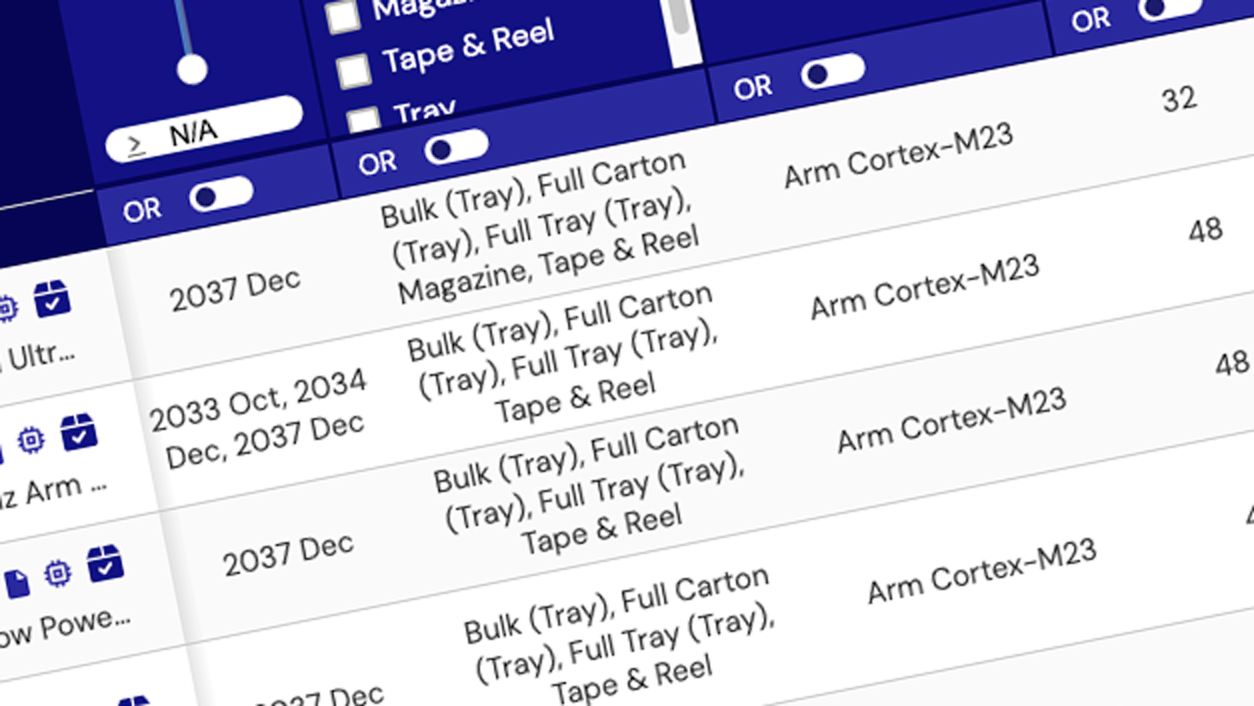Renesas' programmable crystal oscillators (XOs) are designed for the ultimate flexibility, short lead time, and minimizing non-recurring engineering effort. Our XO families offer low jitter clock sources, featuring typical RMS phase jitter down to 120fs, programmable frequency up to 2.1GHz, and support different levels of performance, output types, stabilities, input voltages, packages, pin configurations, and temperature grades.
ProXO Field Programmable Clock Oscillators
The Renesas ProXO series, including the XT/XP/XF families of devices, are designed for data centers, optical and wireline communication networks, and industrial level equipment that demand very low noise, stable, and accurate clock sources. Typical phase jitter is 120fs over 12kHz to 20MHz bandwidth. The devices are available in a wide frequency range from 15MHz to 2100MHz with package sizes down to 2.0mm x 2.5mm.
The XP/XF families have stabilities as tight as ±25ppm for -40 °C to +85 °C and ±50ppm for -40 °C to +105 °C. For even tighter stability, we recommend the XT family; with integrated TCXO technology, XT offers ±3ppm for -40 °C to +85 °C. Short lead-time, low noise, wide frequency range, excellent ambient performance, and very little engineering effort to incorporate this into your design makes the XT/XF/XP devices an excellent choice over other technologies.
XL, XA (Automotive) and XU High-Performance Clock Oscillators
The Renesas XL, XA (conforms to AEC-Q200), and XU crystal oscillators are available in HCMOS, LVPECL, LVDS, and HCSL outputs. The XU and XL/XA families have 300fs and 750fs typ. RMS phase jitter (12kHz – 20MHz), respectively. Devices are offered with frequency stability options of ± 20ppm, ± 25ppm, ± 50ppm, or ± 100ppm and fast lead times for custom frequencies from 16kHz to 1.5GHz. These products feature industry-standard packages (3.2mm x 2.5mm, 5mm x 3.2mm, 7mm x 5mm) and pin-outs. These products have the performance, price, and delivery to meet your design requirements. Applications include networking, vision system, infotainment, communications, data I/O, storage, and servers.
Low-noise, Low-Power Crystal Oscillators
Renesas crystal oscillator devices are low-power crystal oscillators that can be used in standard 5mm x 7mm quartz oscillator footprints. The phase noise performance of the Renesas crystal oscillators enables their use as reference clocks for phase-noise sensitive applications. The low-power oscillators are ideal for clock generation where low phase-noise reference clocks improve transmission distance or reduce bit error rates and conversion errors of data transmission lines. Additional examples of application uses can be found in wireless infrastructure radio and base-band processing units, high-speed SerDes clocking (for instance S-RIO 1.3 and 2.1), PCI Express® Generation 1, 2 and 3, various Ethernet interfaces (Gigabit Ethernet, XAUI and 10Gbit Ethernet), optical interfaces in SDH/SONET applications (OC-12, OC-48, and OC-192) and in driving DAC/ADC devices in instrumentation applications.
Key Selection Criteria for Quartz Oscillator ICs
While physical footprints have tended to standardize, quartz oscillator ICs offer various features and levels of performance. Key attributes include:
- Output type: This is the signaling type of the output that is required of the crystal oscillator circuit. Renesas offers CML, HCMOS, LVCMOS, HCSL, LVDS, and LVPECL.
- Output frequency range: The valid range of output frequencies. Renesas offers quartz crystal oscillators to address the frequency needs of all popular applications.
- Core voltage: The supply voltage used to power the device. This is typically defined by the power rails available in the system and often has implications on the voltage levels of the output. The Renesas low-power oscillators are offered in 1.8V, 2.5V, and 3.3V options.
- Phase jitter: Defined as the undesired deviation from an ideal periodic timing signal. Renesas low-power oscillators offer typical RMS phase jitter down to 120fs integrated over 12kHz to 20MHz for high-performance applications.
About Crystal Oscillators and Crystal Oscillator Replacement
A crystal oscillator (or clock oscillator) uses the mechanical resonance of a vibrating crystal or piezoelectric material to create an electrical signal at a precise frequency. This frequency is commonly used to provide a stable clock signal for digital integrated circuits within a system. The most common type of piezoelectric resonator used is the quartz crystal. In general, a crystal oscillator circuit sustains oscillation by accepting a voltage signal from the resonator, amplifying it, and feeding it back to the resonator. When the energy of the generated output frequency matches the losses in the circuit, the oscillation can be sustained. Renesas offers thousands of timing products (such as quartz crystal oscillators/clock oscillators) to suit the needs of most applications.



